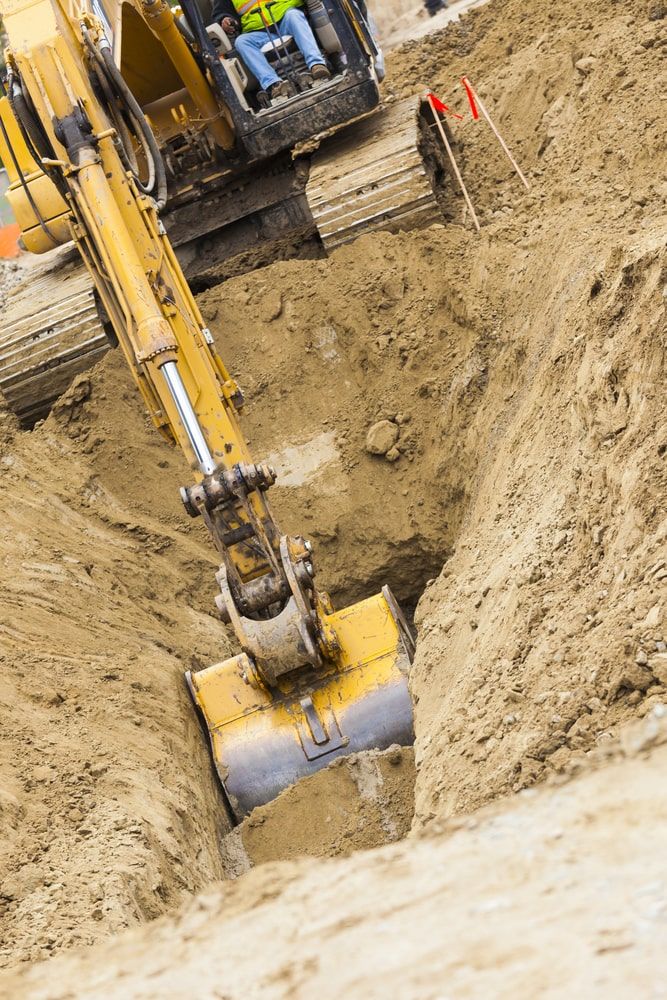Residential Excavating Ohio - Specialized Excavation for Ohio Residences
Residential Excavating Ohio - Specialized Excavation for Ohio Residences
Blog Article
Comprehensive Expedition: The Science Behind Superior Excavation Practices
From old hand devices to modern-day hydraulic excavators, the evolution of excavation techniques has been a testimony to human resourcefulness and technical developments. What absolutely establishes premium excavation methods apart is a deep understanding of geological principles, paired with the usage of advanced devices and approaches.
Development of Excavation Methods
Throughout background, the development of excavation strategies has played a vital role beforehand building methods and archaeological explorations. From the fundamental tools utilized by our forefathers to the innovative equipment used in contemporary times, the progression of excavation techniques has actually substantially changed how we come close to different tasks.
In old times, manual work with basic devices such as wheelbarrows, pickaxes, and shovels was the key approach of excavation. This labor-intensive procedure restricted the depth and scope of excavations, commonly causing sluggish development and limited accessibility to particular sites. As worlds advanced, so did the techniques and tools used for excavation.
The Industrial Change noted a transforming point in excavation practices with the introduction of steam-powered equipment. In contemporary times, technology plays a critical duty in excavation, with improvements like General practitioner systems, drones, and 3D scanning boosting precision and efficiency in the area.
Duty of Technology in Excavation

The assimilation of sophisticated technology has actually essentially changed the area of excavation, improving accuracy and performance to extraordinary degrees. One of the key technological innovations that has significantly affected excavation techniques is the application of general practitioner systems. These systems permit precise mapping of excavation websites, making it possible for drivers to accurately find below ground energies and frameworks. In addition, the use of telematics in excavation devices has allowed real-time surveillance of device performance, causing aggressive upkeep and enhanced functional efficiency.
Additionally, the arrival of 3D modeling and simulation software application has streamlined the preparation procedure for excavation tasks. Designers and operators can currently visualize the whole excavation process before beginning, maximizing and recognizing possible challenges operations. Combined with this, the execution of drones in excavation activities has actually facilitated airborne studies, volumetric measurements, and website assessments with unequaled rate and accuracy.
Geological Principles in Excavation
An understanding of geological concepts is important for guaranteeing the architectural integrity and security of excavation sites. Geological factors play an important role in identifying the usefulness and safety of excavation tasks (lancaster excavation). One essential geological concept to take into consideration is the sort of soil or rock present at the site. Various dirt kinds, such as sand, crushed rock, or clay, have differing levels of security and call for various excavation methods. As an example, natural dirts like clay might call for additional assistance to stop collapses, while sandy soils might be prone to erosion throughout excavation.
In addition, the geological structure of the area, consisting of faults, cracks, and rock developments, must be thoroughly analyzed to determine prospective dangers and obstacles. Excavating near geological fault or unsteady rock formations can result in instability and potential hazards. By carrying out extensive geological surveys and analysis, designers and excavators can develop approaches to minimize threats and ensure over at this website the successful completion of excavation jobs. Ultimately, including geological concepts right into excavation practices is important for attaining safe, reliable, and sustainable outcomes.

Most Recent Tools for Excavation
In the realm of excavation techniques, contemporary advancements in devices have changed the performance and accuracy of excavation processes. One of the most up to date devices making waves in the market is making use of drones geared up with innovative imaging technology. These drones can supply in-depth aerial surveys of excavation sites, using real-time data on topography and prospective dangers. This details aids in better preparation and decision-making throughout the excavation procedure.
One more cutting-edge tool obtaining popularity is the execution of 3D printing technology for developing personalized excavation devices. This permits the manufacturing of specialized devices that are customized to the details needs of a project, boosting performance and decreasing downtime.
Additionally, improvements in materials science have resulted in the growth of more powerful and much more resilient excavation tools. lancaster excavation. Tungsten carbide-tipped excavator add-ons, for instance, offer remarkable performance in tough ground conditions, enhancing performance on-site
Science's Effect on Excavation Practices

In addition, scientific research study on dirt mechanics and geotechnical design has actually provided useful insights right into dirt habits, allowing excavation experts to make educated decisions concerning excavation methods and dirt stabilization techniques. On the whole, scientific research continues to drive innovation and improvement in excavation methods, making excavation jobs extra effective, cost-efficient, and lasting.

Final Thought
To conclude, the advancement of excavation strategies has actually been considerably affected by advancements in technology and a much deeper understanding of geological concepts. The newest devices and equipment made use of in excavation have actually enhanced effectiveness and accuracy in the area. The application of clinical expertise has actually dramatically improved excavation methods, leading to extra sustainable and effective methods this contact form for excavating numerous types of materials.
In the realm of excavation practices, modern developments in devices have actually reinvented the performance and precision of excavation processes. By leveraging clinical principles, the excavation industry has been able to considerably boost effectiveness, accuracy, and safety and security in excavation procedures. GPR enables excavation groups to non-invasively check and map subsurface frameworks, utilities, and possible risks, allowing them to intend excavation tasks with greater accuracy and decreased risk of crashes.
Additionally, scientific research on soil auto mechanics and geotechnical design has actually provided important understandings right into dirt behavior, allowing excavation specialists to make informed choices relating to excavation approaches and soil stabilization techniques. Generally, science continues to drive advancement and improvement in excavation techniques, making excavation projects a lot more efficient, economical, and sustainable.
Report this page